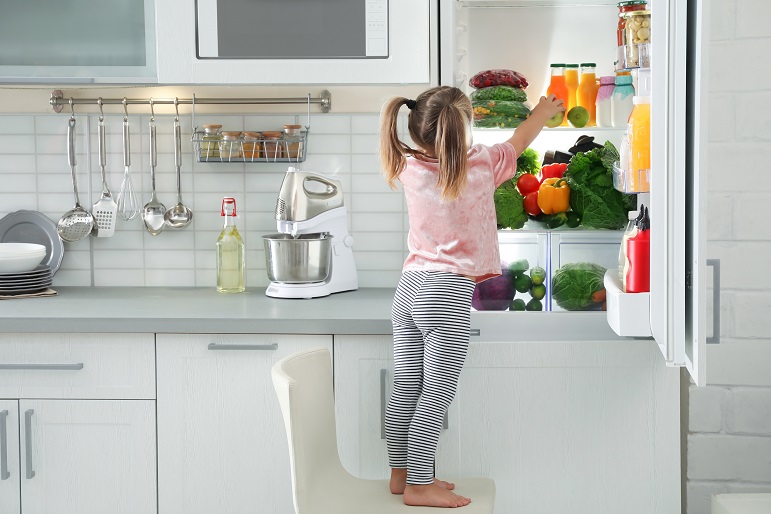
Common fridge freezer faults and how to fix them
If your fridge isn't working properly, there are some things you can do to check for faults. Read our guide on common faults and how to fix them.
Get 20% off* your next protection policy
We’re always looking for ways to make life easier for our valued customers and now more than ever we want to help you keep your home running smoothly.
You can get 20% off* your next policy for the first 12 months as a thank you for protecting your appliance with us.
*Excludes tablets, boilers and mobile phones. Products must be in good working order, more than 3 months and less than 8 years old. You cannot cancel the policy and then purchase another policy to protect the same item within 12 months of the original policy purchase date. Prices will revert to standard rates at the end of the first 12 months of the policy. Note, some policies have an excess.
Throughout this article we’re going to be using the word ‘fridge’ when referring to either a fridge or a fridge freezer. The only difference between the two is that a fridge freezer is made up of a fridge and a freezer in one unit. Therefore, for the purposes of brevity, we’re going to just use fridge.
How do fridges work?
The fridge freezer was a game-changer. Before its invention in 1913, households had to rely on other ways to keep their food fresh. Early methods included storing food underwater and preserving it with salt.
Fridge repairs and replacements can be expensive, so it’s good to understand the nuts and bolts of how they run. This gives you a better chance of catching small issues before they become bigger faults.
Refrigerant travels through the fridge’s system, turning from a liquid to a gas and back again. The process repeats on a continuous loop and is essentially what keeps a fridge running. Here’s a detailed explanation of how the cycle works:
- An expansion valve, also known as an expansion device, drastically reduces the pressure of liquid refrigerant passing through the fridge’s system. This causes some of the liquid to evaporate.
- The remaining liquid passes through the evaporator coil, absorbing heat from the air and food inside. It evaporates inside the evaporator coil and becomes a low-pressure gas.
- The gas enters the compressor, which squeezes it, causing its temperature and pressure to rise.
- The gas is then directed into the condenser, a coil-like structure on the back of your fridge. There, heat is released by a fan or cooling fins and it turns back into a liquid.
- The cool liquid re-enters the expansion valve and the cycle restarts.
A popular refrigerant used to be chlorofluorocarbons (CFCs), a chemical compound containing chlorine. This compound can’t be washed away by rain or snow — it’s not water soluble, like some natural chlorine compounds. Because there’s no way of breaking it down, it can survive in the atmosphere until it reaches the stratosphere, damaging the earth’s ozone layer.
The 1987 Montreal Protocol — a global agreement to protect the ozone layer, signed by multiple countries worldwide — lead to CFCs being banned.
However, some fridges still contain fluorinated greenhouse gas (F-gas) — hydrochlorofluorocarbon (HCFC) or hydrofluorocarbon (HFC). While these aren’t as harmful to the ozone layer, they still contribute to global warming. If you need to get rid of an old fridge, please check if it contains F-gas. Your local council will need to collect it and recover the F-gas.
The production of F-gas fridges in the UK ended in 2015. Refrigerants used by manufacturers nowadays are not harmful to the ozone layer. Alternatives include R290, R600a, and CO2.
What's the typical lifespan of a fridge?
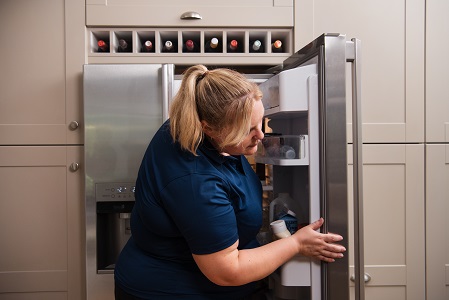
There’s no one answer to this question. It depends on:
- Your fridge’s brand and model
- How often you use your fridge
- How well you look after your fridge
There are lots of things you can do to keep your fridge working for as long as possible – more on this later. But generally, most fridges are designed to last for at least a decade. Some even manage to hit the 20-year mark.
8 common fridge freezer faults and how to fix them
A well-maintained fridge can last for donkey’s years, but this doesn’t stop things from going wrong every so often. While complex issues require a professional fridge repair, there are faults you can easily fix yourself.
There's no power to my fridge
No power? No problem! It sounds obvious but it’s worth checking your fridge isn’t switched off. Once you’ve ruled this out, you can work your way through this list:
- Check the plug and lead for any damage.
- Take a fuse (of the same rating, most likely 13A) from something else that is working (such as a kettle or toaster). Put the fuse in the plug of the appliance then try switching it on again.
- Try another electrical appliance in the socket and see if it works. If it does not, then the electrical socket may be at fault.
- If your appliance is connected via an extension cable, try another, or try plugging it directly into the mains.
My fridge isn't as cold as it should be
Were you looking forward to a nice cold beverage only to find it’s lukewarm, at best? Here are some things to check if your fridge isn’t as cold as it should be.
- Check the door closes properly. If it’s not closing, this could be due to:
- Food or debris stuck in the door seal — a quick clean should sort this out.
- Storage bins, compartments or drawers sticking out — ensure these are pushed back.
- Frost building up in the freezer area. If ice is building up, we recommend defrosting the appliance.
- The fridge not being level. If your fridge is tilting too far forward, the adjusting screws may need to be levelled. We advise checking the user manual that came with your fridge for instructions on how to do this. It’s also worth checking the ground beneath the fridge is level.
- Make sure the temperature adjustment knob or thermostat is set to the correct temperature. Please refer to your user manual for the correct temperature setting.
- Is the appliance too full? If it’s too full, the air won’t be able to circulate as easily and keep the food at the correct temperature. If you plan on freezing lots of food, you can switch on your appliance’s ‘fast freeze’ function (if your appliance has this) the day before the big shop.
A final thing to consider is if the door is opened too frequently. Try not to leave the door open for long periods, e.g., while you decide what to snack on. With an upright fridge freezer, each time the door is opened, some of the cool air falls out and warmer air comes in.
Food in my freezer has defrosted
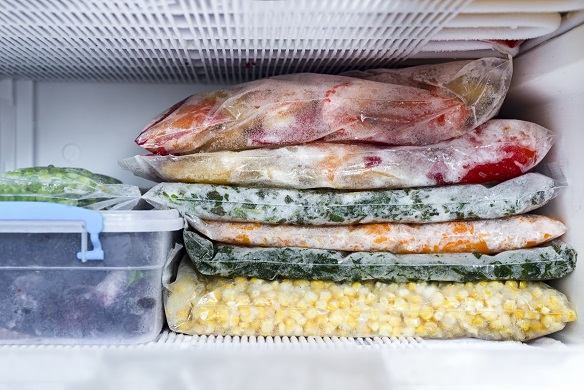
If your fridge is failing to keep food frozen, you should check:
- The temperature of your kitchen, pantry or utility room. If the room in which it’s located is below 10 °C, the fridge may start to defrost.
- The power is on. If the appliance has been disconnected from the power or the power supply has been disconnected, then the food in the freezer will defrost.
- The door seals — could something be stopping the door from closing properly?
My fridge is warm or hot on the outside
Don’t worry, this is normal. Raised temperatures are necessary to avoid condensation forming on and in certain parts of the appliance.
Some modern fridges have part of the cooling mechanism wrapped around the sides of the appliance, under the skin of the body. This allows heat from the refrigeration cycle to be released more effectively.
My fridge interior light doesn't come on
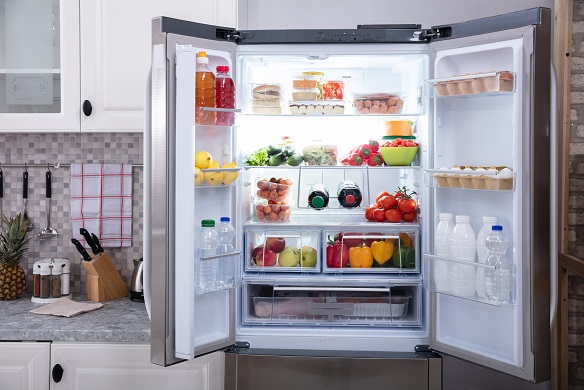
If the interior light of your fridge doesn’t work, check the appliance is plugged in and switched on. If that doesn’t do the trick, try:
- Testing the internal light switch or button to see if there is anything restricting its movement or making it stick. This is located inside the fridge, usually on one of the walls. You should be able to push the button in and out easily with your finger, making the interior light come on and go off.
- Replacing the lightbulb (refer to your user manual for guidance on how to do this). When fitting a replacement, be sure to use the correct bulb type.
There are smells coming from my fridge
Over time, bacteria can build up in the door seals of your fridge. Fortunately, a clean of the surfaces and in the folds of the seal with an antibacterial cleaner or hot soapy water will remove this. An old toothbrush can be used to get into difficult areas.
Cleaning the inside surfaces of the appliance with an antibacterial spray regularly will reduce the likelihood of smells appearing. And a small dish of bicarbonate of soda powder in the back of the appliance will help to absorb any strong smells unwrapped food may create.
Be aware of an ammonia smell. This could be a sign that there is a fault with the appliance and the gases within are leaking. If this is the case, you need to get it fixed as quickly as possible and you may even need to evacuate the house. It may seem like an extreme measure, but leaking ammonia is not something you can risk being around for any length of time.
There's ice build up in my freezer
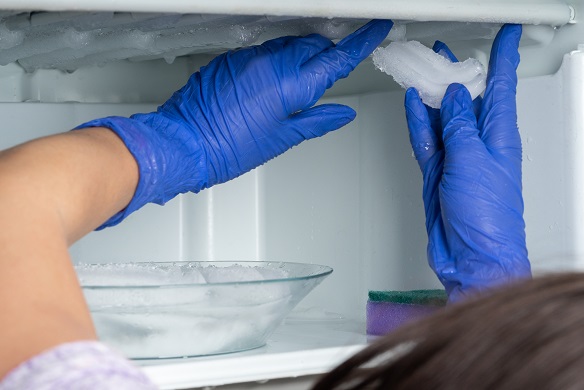
Ice can build up when the door is left open for longer than necessary. This causes humidity levels to change as the cooled air escapes and warm air creeps in. Here are a couple of things to consider:
- Are the doors closing fully? Pull the appliance out from the wall and have someone lean it back far enough for you to reach the two front pedestal feet (take care, your fridge will be heavy). Screw both feet out a few turns. This will ensure the doors close on their own and that collected water is properly draining from the fridge freezer.
- Confirm that the door seals are clean and not damaged.
My fridge freezer is making unusual sounds
You may hear a cracking sound coming from your fridge freezer — this is usually caused by built-up frost.
A loud vibrating noise may be due to the appliance not being levelled properly. It’s normal for the compressor to make some noise. However, we suggest checking the levelling if the noise is annoyingly loud.
Keep in mind that it’s normal to hear refrigerant circulating around the system (even when the appliance isn't running).
What to do if this doesn’t fix the problem
If you’ve tried fixing it yourself and it still isn’t working, it’s time to book an engineer to come and fix your fridge.
How can I prevent my fridge from breaking down?
You can help prevent faults with your fridge freezer by keeping it clean. Defrost your freezer at least twice a year to stop ice clogging up. Clear out mouldy food and wipe down the surfaces inside on a regular basis.
If you notice anything unusual and your appliance’s performance is suffering as a result, it’s better to be safe than sorry. Call an expert engineer to investigate the problem.